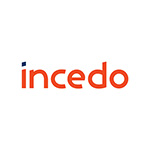Cloud Cost Optimization:
Cloud has a decentralized model of consumption where each department or BU has visibility into their cloud consumption thanks to fine grained Account creation and control and billing segregation. The decentralized model has raised costs for organizations exponentially, and often without any control over the spiralling bottom line. Businesses will have to start to get a handle on these costs as cloud usage grows, streamlining the expenditure that they are not utilizing to full effect, and cutting out duplicate spending or unnecessary overheads.
This also provides an opportunity to vendors who can build their tools and services around cloud optimization services.
Hybrid Cloud environments take a big jump with Focus on Automation:
With cloud-native computing [and] container-based workloads gathering steam, enterprises will want to build solutions that take advantage of their on-premise resources and cloud resources equally adding that in some organizations cloud utilization will be driven by specialized circumstances or use cases rather than as the default setting. Serverless architecture driven by containerization and orchestration engines will hybrid cloud approach easier.
Managing complexities arising from multi cloud environment is possible by automation tools along with comprehensive dashboards that provide a holistic view into cloud operations
Delayed migrations due to Insufficient IaaS skills:
According to Gartner “Through 2022, insufficient cloud IaaS skills will delay half of enterprise IT organizations’ migration to the cloud by two years or more. Today’s cloud migration strategies tend more toward “lift-and-shift” than toward modernization or refactoring. However, lift-and-shift projects do not develop native-cloud skills. This is creating a market where service providers cannot train and certify people quickly enough to satisfy the need for skilled cloud professionals”.
To overcome the challenges of this workforce shortage, enterprises looking to migrate workloads to the cloud should work with managed service providers and SIs that have a proven track record of successful migrations within the target industry. These partners must also be willing to quantify and commit to expected costs and potential savings.
Security, reliability, and flexibility drive cloud strategies :
The early convention of cost savings by moving to cloud is no longer the only one although an important one. However security , reliability and flexibility have become key driving factors in mutli-geographic and multi-vendor environment.




